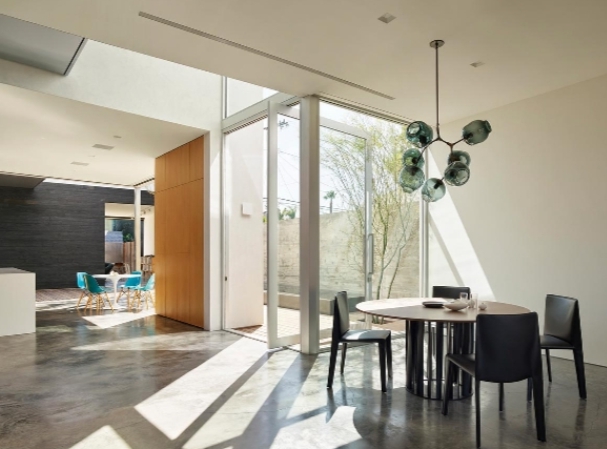
What Is The Role of Natural Light in Home Design?
The significance of natural light in home design extends to various aspects. It is central in crafting a residence that is not solely functional but also aesthetically pleasing.
Amidst numerous factors for contemplation, natural light is a foundational element that significantly impacts the ambience, eco-friendliness, and general coziness of a living area. In the subsequent sections, we will explore natural light’s diverse and essential roles in home design.
Elevating Aesthetics:
Unquestionably, natural light emerges as an incomparable asset when it comes to elevating the visual appeal of a residence. It infuses rooms with a warmth and vibrancy that artificial lighting cannot replicate.
The interplay of sunlight with different textures, materials, and colors can create visually appealing and inviting spaces. From casting dramatic shadows on textured walls to highlighting the grain of wooden furniture, natural light adds depth and character. It further elevates the design of any room.
Energy Efficiency:
Integrating natural light into home design is aesthetically pleasing and energy-efficient. By strategically placing windows and skylights, homeowners can reduce the need for artificial lighting during the daytime. It further helps in lowering electricity consumption.
Moreover, proper utilization of natural light can also contribute to passive solar heating, where sunlight is harnessed to naturally warm the interior during colder months, reducing the reliance on heating systems. Click here for more information about home design ideas!
Visual Comfort:
Artificial lighting can often lead to glare and uneven illumination, causing eye discomfort. On the other hand, natural light provides even and diffused illumination that reduces eyestrain.
It creates a more comfortable visual environment. Its significance becomes especially pronounced in areas where activities like reading, working, and cooking occur, as ample lighting can substantially influence the quality of these endeavors.
Sustainable Design:
As sustainability becomes increasingly important in home design, natural light plays a pivotal role. Maximizing daylight reduces the reliance on energy-consuming artificial lighting, decreasing a home’s carbon footprint.
Additionally, by harnessing natural light for passive heating, homeowners can decrease their dependency on heating systems powered by non-renewable energy sources.
Design Flexibility:
Natural light offers designers and homeowners a wide range of creativity and flexibility. The ever-changing nature of sunlight throughout the day allows for dynamic transformations within a space.
Design elements introduce light from above and can add unique architectural features while optimizing light distribution.
Privacy and Comfort:
While natural light is highly desirable, maintaining a balance between light and privacy is essential.
Design solutions such as frosted glass, strategically placed vegetation, or adjustable window treatments can ensure that the influx of natural light doesn’t compromise the occupants’ sense of privacy and comfort.
Final Remarks
In short, the role of natural light in home design is far-reaching and profound. Integrating natural light into living spaces is a crucial consideration for any homeowner or designer, from enhancing aesthetics and well-being to promoting energy efficiency and sustainability.
By thoughtfully harnessing the power of sunlight, one can create a harmonious and enriching living environment that positively impacts both the inhabitants and the planet.







